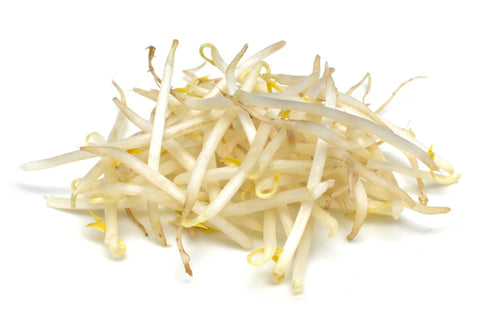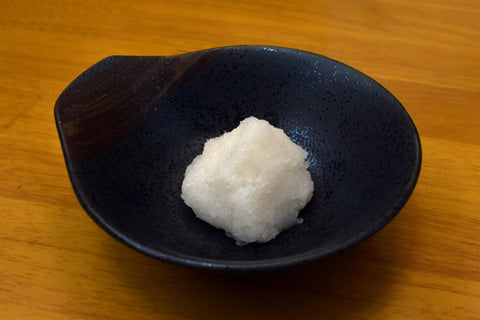
Today’s blog topic will explore the delicious and dynamic world of RAMEN TOPPINGS!
Would you get tired of having ramen too often?
For me, it’s difficult to get tired of eating ramen, even if I were to have it everyday.
Why is that?
Because there are so many variations and colorful combinations that make the ramen you eat today so different and unique from the ramen you ate yesterday or the one you will eat tomorrow.
The broth can be made from various flavourful bases, such as, a thick and rich pork bone broth or a mild and light salt base.
The noodles can be made to suit your taste: thick or thin, and chewy or soft.
Hundreds of different Japanese ingredients can be used to serve as toppings.
Assorted types of meats marinated and prepared in multitudinous ways and fresh vegetables are just a few things that make that bowl of unique ramen catered especially to you.
There are so many selections available to make your ramen creation a special experience catered to your preferred taste.
Let’s take a look at some in detail!
1. Chashu (チャーシュー)

Chashu is a thinly-sliced piece of braised pork. The origin of the word “chashu" is actually Chinese and it literally means, fork-roasted (pork).
However, the Japanese meaning of the word refers to braised pork in general.
The 3 most popular kinds of marinade for chashu are soy sauce, miso, and salt.

The location of the cut of pork plays a vital role in the taste of the chashu.
Butabara: Pork belly chashu is the best for people who enjoy the fatty taste of pork.
Rosu: Pork loin chashu is the lean part of the pork, which is a great option for the health-conscious or for people who don’t like the oily taste of fatty meats.
Katarosu: A good combination of both the fatty part of the chashu and red meat is the pork shoulder.
For people who can’t have pork due to health reasons or religious reasons,
there are some great alternatives available in Japan: beef chashu, chicken chashu, and duck chashu.
Usually, for beef chashu, the bottom round is used, while for chicken and duck chashu, the breast is most often used.
Chashumen is used to refer to a ramen that contains a lot of chashu.
2. Kakuni (角煮)
Unlike its thin-sliced chashu counterpart, kakuni is a thick-sliced or cube-shaped piece of braised pork belly.
The cooking method includes putting cut-up pork cubes into a mixture of soy sauce, sugar, green onion and sake and braising it for hours.
This method yields a piece of meat that has a far richer taste than chashu.
This is a regional dish prominent in the southern parts of Japan, namely, Kagoshima and Okinawa. The Okinawa version of kakuni is called rafute.
The slight difference between the two is that instead of using sake and brown sugar, rafute combines awamori sake (indigenous to Okinawa) and Okinawa black sugar.
3. Niku Soboro (肉そぼろ)

Niku soboro is flavoured ground chicken, beef, or pork that is fried until they turn dry.
The ground meat is seasoned by soy sauce and sugar.
4. Ajitama (味玉)
Debatably, one of the top 2 most popular ramen toppings of all time, is the marinated ramen egg.
The ramen egg is famous and well-loved for its firm and seasoned egg whites, coupled with a soft and succulent egg yolk.
There are many variations of ajitama available to suit different preferences.
Depending on the restaurant, ajitama can be hard-boiled, half-boiled, made with a runny consistency, marinated in soy sauce or vinegar.
Some restaurants even use quail eggs instead of chicken eggs.
5. Menma (メンマ)

Menma is fermented bamboo shoots. The type of bamboo used to make menma is called machiku (麻竹).
This type of bamboo grows in Taiwan and Southern China. Historically, menma was called shinachiku.
“Shina” is an old name for China which the Taiwanese government disliked.
Hence, the new name “menma” was created which is formed by the two words raMEN and MAchiku.
6. Shiraganegi (白髪ねぎ)
Literally meaning “white-haired” green onion, the shiranegi is the shredded white part of the green onion.
How it is shredded affects the flavor, so it’s important that the shiranegi is shredded at a right angle and vertically.
7. Aonegi (青ねぎ)

Aonegi is chopped green onion. Aonegi ramen is a ramen which has a lot of chopped green onion covering the top of the noodles.
8. Corn (コーン)
Almost all miso ramen have corn as a topping.
The sweetness of corn is effectively accented by the savoury soup base of miso ramen.
The reason why miso ramen almost always comes with corn as a topping is due to the location of its origin.
Miso ramen was invented in Hokkaido, where the regional specialty is corn.
9. Bean Sprouts (もやし)

Another common topping that goes with miso ramen, is a mountain of bean sprouts.
Hokkaido people enjoy the combination of bean sprouts with their ramen as it adds a texture of crunchiness to their noodles.
However, some people don’t like this as a topping as the moisture from the bean sprouts thins out the taste of the soup.
10. Asparagus (アスパラガス)
Originating from Sapporo, Hokkaido, is the healthy ramen option called “ramen salad”.
Asparagus makes the perfect topping for this type of ramen.
11. Onion (玉ねぎ)

Tamanegi is Japanese for onion. The umami from tamanegi is stronger than from green onion in certain ramen soup bases.
12. Leek (韮 )

In some Japanese ramen restaurants, you can see spicy marinated leek inside a small bowl on the counter or your table.
Leeks are a heavenly match to shio tonkotsu ramen.
13. Takanazuke (高菜漬け)

Takanazuke is pickled mustard leaf. The Japanese pickling method used to make takanazuke is characterized by its short preparation time.
Takana is a plant with hot leaves and stem.
14. Karashi Takana (辛子高菜)
Karashi takana is spicy mustard leaf. It is made by pan-frying takana leaves with child pepper.
Ramen restaurants in southern Japan, such as Fukuoka and Kumamoto, that serve tonkotsu ramen have karashi takana readily available on the counter or table, ready for you to use freely with your ramen.
15. Benishoga (紅生姜)

Benishoga is red pickled strips of ginger. You can find this as a topping on almost all tonkotsu ramen in Japan.
In 1956, the Nonkiya ramen shop owner Oishi-san pioneered the use of benishoga in ramen when he put this topping onto the noodles he was serving as he found his ramen a bit flat in taste.
The unique taste of benishoga complemented tonkotsu ramen very well and thus quickly becoming popular.
Interesting point to note is that Oishi-san was also the first person to use karashi takana with ramen as well.
16. Cabbage (キャベツ)

The crisp taste of cabbage adds the perfect finishing touch to miso ramen and is used often as a topping in this type of ramen.
17. Spinach (ほうれん草)

There are three reasons which makes spinach a well-liked topping for ramen.
First, spinach has a lot of vitamins and is a great source of nutrition. In addition, the deep dark green colour of spinach adds colour to your ramen making it aesthetically tasty.
Spinach also works well with thick soup because of its simple, yet refreshing taste, which helps with digestion and the stuffy and heavy feeling from thick broth.
18. Canola Plant (菜の花)

Closely related to the canola plant, nanohana are young spring shoots that are traditionally used as ramen toppings in the spring.
19. Garlic (にんにく)

Garlic is a common free topping in ramen shops in Japan.
Some restaurants serve raw garlic cloves with a garlic crusher readily available next to it, while some serve minced raw garlic in a box.
Garlic can really intensify the taste of ramen. However, the suggested intake of garlic is one clove per day (if in raw form).
20. Sesame Seeds (ゴマ)

Sesame is a common topping for shio ramen. Grinding sesame seeds elevate the aroma exponentially.
21. Fried Vegetables (野菜炒め)

Assorted fried vegetables (including, but not limited to, bean sprouts, carrots, and cabbage) are common toppings for miso ramen.
22. Ground Daikon (大根おろし)

Ground daikon radish is usually found as a condiment to fish or meat dishes.
However, it also makes a great ramen topping as it has a refreshing tangy taste, but also a hint of sweetness.
23. Mitsuba (三つ葉)
The bright green refreshing colour of this Japanese parsley added to your ramen makes the overall look visually appetizing.
24. Lime (ライム)

Not a very common topping, but lime makes a great addition to fish broth ramen.
25. Nori (海苔)

Japanese sun-dried seaweed is an excellent supporting character of ramen.
Nori was originally a soba topping, however, many soba chefs turned into ramen chefs in Tokyo and thus this topping also migrated over.
Which do you like? Eating your crispy nori or dipping it into the soup and enjoying it with a taste of the broth?

26. Kikurage (キクラゲ)

Cloud ear fungus is especially popular in the southern parts of Japan.
The chewy kikurage adds a different layer of texture to the thin and soft southern-area noodles.
Kikurage doesn’t have a distinct flavour or taste, but it helps decompose fats and oils making thick tonkotsu ramen more mild and easier for digestion.
27. Shiitake Mushrooms (椎茸)

Shiitake mushrooms have a meaty and buttery texture and it effectively absorbs the broth it is soaked in.
It pairs well with thick-based ramen and intensifies the flavour.
28. Shijimi Clams (蜆)

Shijimi clams help prevent hangover. They can be used as both toppings or a base for soup stock.
29. Kamaboko (蒲鉾)

Kamaboko is a type of processed seafood created by steaming various pureed and deboned white fish with additives and flavourings.
The outcome is a firm loaf that is then sliced and added into soup noodles.
30. Narutomaki(鳴門巻)

Narutomaki is a type of kamaboko. Named after the Naruto whirlpools of Awaji Island in Shikoku, because of its distinct pink and red spiral pattern.
The anime character, Naruto Uzumaki was named after this Japanese ingredient.

31. Butter (バター)

A small piece of butter can make the overall ramen taste a lot smoother and richer.
32. Wonton (ワンタン)

Japanese wontons are very similar to their Chinese counterparts.
Essentially, they are both fillings of meat or seafood wrapped in a smooth, silky noodle wrapper.
33. Cheese (チーズ)

A slice of cheese melted onto a bowl of hot piping ramen instantly softens the noodles and adds a velvety and buttery twist to the overall taste.
34. Kimchi (キムチ)

A tasty flavourful aroma from the spicy fermented cabbage balances the salty and rich broth from the ramen. A nice addition as it gives the ramen a little spicy kick.
35. Rayu (ラー油)

It is a type of hot spicy oil that goes well with miso ramen and tantan-men.
Rayu is frequently used for as a condiment for gyoza (Japanese dumplings), but some people use rayu to make their ramen spicy. Make it in the comfort of your own home!
36. Yuzukosho (柚子胡椒)
Yuzukosho is paste that is made from chili peppers, yuzu peel, and salt. Usually, it is used in Japanese soup, hot pot, sashimi, tempura, yakitori, and tofu. It goes well with shoyu and shio ramen.
It originally came from the Kyushu area (southern Japan), which is known for the production of yuzu.
People use this condiment for Japanese-style hot pot, soup, sashimi, tempura, tofu, and yakitori (grilled chicken skewers).
People also use yuzukosho in their ramen. This citrusy taste pairs well with shio or shoyu ramen.
After learning about these toppings, you might want to try them at home with your homemade ramen.
Do you have large Japanese ramen bowls, spoons, and chopsticks in your kitchen cupboard?
If you don't or would like to get a new set, here's an opportunity we think you'll appreciate.
Maybe Our Ramen Bowls Are for You...
About the Author

Kei is a self-proclaimed ramen lover, blog writer and founder of "Apex S.K. Japanese tableware".
"I am from Ibaraki, Japan.
Ramen is great! It can bring you a sense of happiness and satisfaction that no other food can. I have been eating ramen for 30 years.
If there is no ramen, my life would be miserable.
Ten years ago, I worked as an office worker. The job was really stressful - excessive working hours, low wages, unpaid overtime work, and constantly being yelled at by my boss.
I was new and alone, no girlfriend, no friends, and felt very lonely.
My only oasis was the ramen shop near the office. For me, the ramen chef there was literally an angel. I saw a halo on his head. (No joke)
Tonkotsu shoyu ramen was my all-time favorite. He made ramen with broth chock-full of umami flavor, nice chewy handmade noodles, and tender chashu.
My greatest dream is connect people with ramen through my blog. I want to share a lot of interesting and funny stories and ramen trivia with you.
Knowing more about ramen can help you appreciate your ramen and make it taste extra delicious."

Did you know that we offer more than just a ramen blog?
We also have an exclusive collection of ramen-inspired t-shirts and hoodies that any true noodle lover will adore.
Head over to ApexRamen and check it out for yourself
Common Ramen Vegetables: 15 Veggies That Are Impossible to Ignore
11 Ramen Condiments You Need to Try Today With Your Noodles
9+ Facts of Narutomaki Ramen Fish Cake and Recipe
Do You Eat the Nori Seaweed in Ramen? 3 Ways to Eat It
11+ Meat Toppings for Even Better Tasting Ramen
Japanese Chili Paste for Ramen: The Secret of Authentic Ramen Taste
Miso Ramen Toppings: 7+ Ingredients for Even Better Tasting Ramen
Poof! Authentic Tender and Juicy Chashu for This Weekend
Is Ramen Vegetarian? The Truth You Need to Know
Chashu: 5+ Secret Facts for Even Better Tasting Ramen

























































What a nice post! This gave me a lot of ideas on what to add to my next ramen bowl.
Thanks Kei!
Hi Dani,
Thank you for reading my article and leaving a comment! I’m so glad to hear that my article was helpful in introducing some new toppings for your ramen. I wish you a great trip to Japan next year – do write back and let me know your thoughts on authentic Japanese ramen!
Hi Kei!
Thanks so much for your post! It was super helpful today. I’m from Tennessee. I have been making ramen from scratch for a little while now, and I wanted to spice things up a bit with some new toppings. Thank you for your input! Blessings, Dani
p.s – I am planning on visiting Japan next year for the Cherry Blossom Festival, so I hope to be able to try authentic Japanese ramen!
Leave a comment